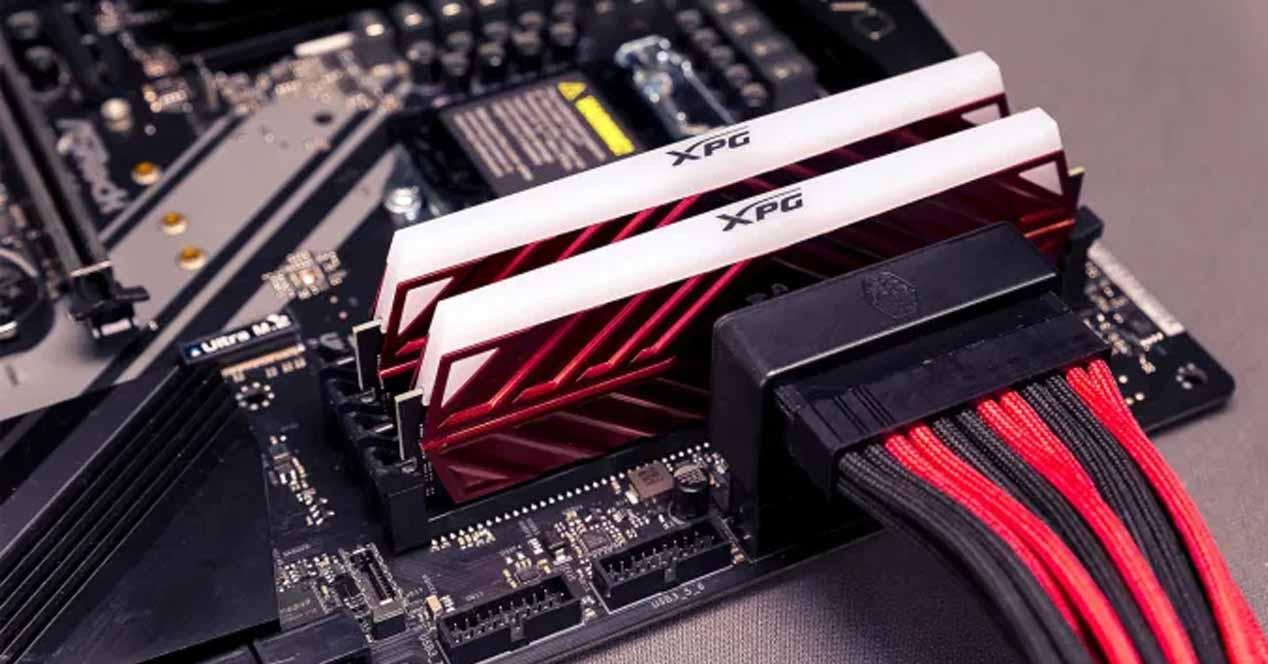As you know, the power supply has many different connectors to service the different hardware components, including motherboard, storage devices, graphics card, etc. More specifically with regard to the motherboard, there are two connectors that go directly there, the EPS which can be 4 or 8 pins (that’s why it is called 4 + 4 pins), and you should know that some high-end motherboards require two of these connectors, and the ATX 20 + 4-pin, which continues with this split design despite the fact that only some low-power models require 20 pins, the rest the full 24.
What are the ATX and EPS connectors on the motherboard used for?
The 20 + 4 pin ATX connector is responsible for powering virtually every component on the motherboard except the processor, and that is why we have the 4 + 4 pin EPS connector which in many sources comes straight labeled as CPU because it is used exclusively to power the processor. The 20 + 4 pin ATX is then for everything else, which includes USB ports, PCI-Express sockets, RAM, etc.
In the diagram above, you can see the pin distribution of the 20 pin and 24 pin connector of the power supply. We see that, among the connectors, we have the three voltages used by the power supply to serve the PC: + 12V, + 5V, + 3.3V and even the -5V already disaffected.
For its part, the EPS connector has the following distribution of pins:
The difference is more than obvious between the two connectors, since the ATX supplies different types of voltage while the EPS only supplies 12V, exclusively for the processor and its voltage controller (the famous VRMs on the motherboard which are those which end up filtering and converting the voltage reaching it to provide what the processor needs).
Why aren’t the two connectors unified into one?
Now that we know what each of the two connectors that power the motherboard do, the inevitable question is, if the ATX connector is already providing + 12V, why do we need the EPS?
The answer to this question lies in the operation of the power supply, but also in the operation of the motherboard and the processor; The power supply converts the alternating current reaching it into 12 V direct current, then internally converts this voltage on the 5 and 3.3 volts rails which supply – among other things – the ATX connector. The goal of all of these conversions is to provide the motherboard with voltages that are closest to what it needs, so that the voltage conversion effort of the motherboard requires minimal work.
So if for example the motherboard needs 1.35 V to maintain the RAM memory, it will use the + 3.3V rail since it is the closest, but when talking for example about USB ports, then it will use the + 5V rail without having to convert anything. This makes everything more confusing if possible because if the processors are operating in ranges that barely exceed 1 volt of current voltage, then why are they giving 12V?
The answer is simply by margins and by control. Motherboards and especially high-end and overclocking oriented motherboards have a complex conversion and filter circuit in their VRM (voltage regulation module or voltage regulation modules)
Surely all of this makes a lot of sense to you and justifies having different cables being used as they go through different circuits but why use 12V then if you could use the + 3.3V rail? The answer is by the margins. A processor, although it operates with a voltage of about one volt, in fact operates with a fairly high current (amperes) which triggers consumption. For this reason, the + 12V rail is provided which is the highest that a standard PC power supply can give, so that the VRMs on the board have all the headroom in the world to be able to allocate resources to the processor.
So in summary, it was decided to use two different cables from the power supply to service the motherboard to leave one exclusively for the fine tuning that the processors need. They could really be unified into one connector if they wanted to, but it would be practically like making a 32 pin connector (24 + 8) to simply bring together all the pins necessary for operation, no more, no less.












